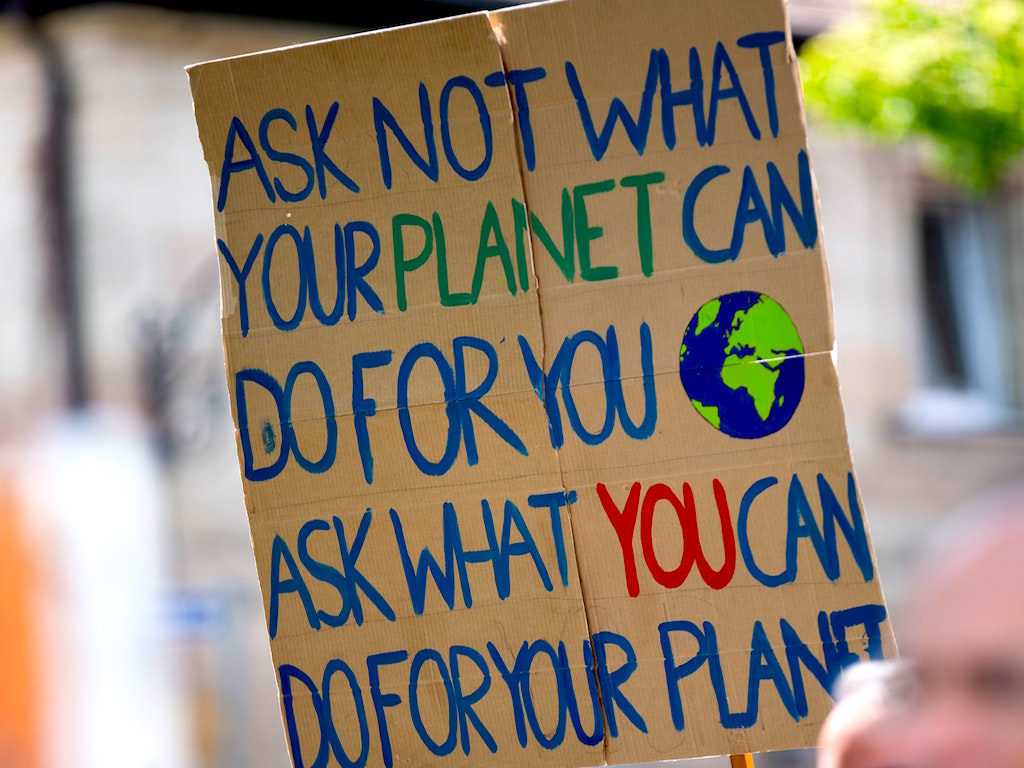4 Mins Read
It’s time for action. In order to meet the target to limit global warming to 1.5 degrees celsius above pre-industrial levels as set by the United Nations IPCC, we have to reduce our carbon footprint. Carbon dioxide and other greenhouse gas emissions such as methane contribute to global warming. In the context of our current climate emergency, we cannot afford to continue neglecting the problems that come with climate change: extreme weather patterns, volatile rainfall and drought, rising sea levels, mass displacement, biodiversity loss, food and water insecurity and more. So below, we roundup concrete measures you can take, besides the typical ‘switch to LED lightbulbs’ and ‘drive less’, to have measurable impact on the planet.
1. Offset Your Carbon Footprint
One of the best ways to fight climate change is to offset the carbon emissions that you have generated, and you can do this by subscribing to solutions provided by climate action streaming service Chooose, which enables brands and people to fund reliable, UN-approved climate offsetting projects, such as replacing oil and coal with renewable energy infrastructure in developing countries.
The platform also provides a carbon drawdown project, which stores captured air pollution in a long-term stable form. You can join directly as a member, recommend it to a business, or make it a climate-positive gift for a friend! Since its inception, the service has reduced over 181 million kilograms of carbon emissions around the world.
2. Eat Less Meat & Dairy
Scientists have increasingly pointed to the need for a deeper lifestyle change in order to save the planet: going plant-based. Consuming meat and dairy products, especially beef and pork, comes with a hefty carbon footprint – the animal agriculture industry is responsible for more carbon emissions than global transportation combined. In addition to this, the production of meat and dairy is incredibly inefficient – it requires vast amounts of land and water, but accounts for only 18% of the world’s food calories.
Alongside fertiliser use that causes land and topsoil erosion as well as water pollution, livestock pastures have also been a leading cause of deforestation of trees that help absorb carbon emissions and threatening extinction of animal species. Last October, guidelines drawn up by the EAT-Lancet Commission called for an urgent reduction in red meat consumption and a doubling of fruits, vegetables, nuts and pulses in our diets in order to fight global climate change and health epidemic. Scientists from another study in May has made it clear that going plant-based is the “single biggest way” to reduce your carbon impact.
3. Plant Trees
We have all heard the saying – the rainforests are the earth’s lungs. Recent social media outrage about the destruction of the Amazon rainforests have contributed to the wave of heightened awareness about the need to save our trees. One of the ways we can do this is by supporting the work of reforestation projects conducted around the world, from the Amazon to Southeast Asia. If directly donating a buck is not your style, you can ditch Google for Ecosia as your primary search engine. For every 45 searches on their engine, the German company plants a tree through one of the 20 reforestation projects that they fund. You might even consider starting a gardening hobby and plant hemp in your backyard: turns out hemp could be an effective, cost-efficient and speedy way to tackle global deforestation.
4. Support Indigenous Communities & Their Rights
On a related note, while simply stopping deforestation could allow existing forests to regenerate, helping to replenish degraded forests and trees could have a much more significant impact for the planet. One of the key parts of this puzzle is helping Indigenous communities and people to control their own land. The International Land and Forest Tenure Facility works on offering grants, legal services and technical mapping assistance to communities to better secure their rights to own rainforests against companies seeking to annex rainforests for mining, palm oil plantations and cattle ranching. By helping organisations such as these, which help secure resources and rights to rainforests, these communities in turn work to protect and restore the forests that absorb greenhouse gases.
5. Neutralise Your Flight Emissions
Shame Plane is a Swedish site that allows you to calculate the impact your flight has had on the melting ice caps in the Arctic circle, or global warming more generally. It was initially inspired by the Scandinavian trend to travel by train rather than air due to the phenomenon called flygskam or “flight shame”. Created without funding or affiliation to any company or organisation, the independent project is based upon scientific data from a number of recent studies, which it clearly lists on the website. On Shame Plane, you can calculate the exact number of emissions generated from your flight from point to point, and find out the different daily actions you can take to try and neutralise these emissions. Some of these actions include recycling, eliminating food waste, switching to LED light bulbs, eating locally grown food, cutting out meat consumption and living car free.
Lead image courtesy of Pexels.




